Eighteen months ago, Iran was hit by the coronavirus epidemic worse than any other country in the Middle East. Originating in China, the Covid-19 epidemic spread rapidly throughout the Islamic Republic, the number of infected and dead growing at an exponential rate. The coronavirus has affected everyone in Iran, from ordinary workers to the most high-ranking senior politicians, killing more than 5,200 people.
Perhaps the globalists believed that since the Iranian authorities had not bowed to sanctions, they might break down under the weight of this deadly virus and make concessions in order to obtain medical assistance from the West. They were mistaken.
When the coronavirus spread to Europe, the position of some European leaders, and even strong supporters of the hardline US President Donald Trump, toward Iran changed swiftly. The pandemic made politicians realize how serious the threat was, and how hard it would be for Iran to fight it given the ongoing pressure of US sanctions.
A group of 24 former senior diplomats and defense officials called on Trump to save potentially hundreds of thousands of lives across the Middle East by easing sanctions that prevent delivery of humanitarian aid and medicine supplies to Iran.
The call had the backing of the former EU foreign affairs chief Federica Mogherini, the former director general of the World Health Organization Gro Harlem Brundtland, former US Secretary of State Madeleine Albright, former US Secretary of Defense William Cohen and Chuck Hagel, former IAEA Director Hans Blix and former NATO Secretary General George Robert.
https://twitter.com/SinaToossi/status/1247170631147360257?s=20
The Secretary-General of the United Nations Antonio Gutteres also called for the lifting of unilateral sanctions against Iran, Venezuela, Syria and Cuba in response to the crisis.
Josep Borrel, the high representative of the European Union, said that the EU approved Iran’s $5 billion emergency loan request from the International Monetary Fund to this end. However, the United States has predictably become a stumbling block in allowing this aid to Iran. Senior officials in the Trump administration believe that if Iran is allowed to tap IMF financing, it will be able to divert those or other funds to help its economy, which the US has been targeting for some time, or to finance militants in the Middle East, rather than on containing the pandemic.
Nevertheless, the assistance was sent. Medical equipment was delivered to Iran in the first transaction under the ISTEX system, a special trade mechanism set up by the UK, France and Germany to bypass US sanctions against Tehran. For Iran, this was a very good sign.
The European special finance channel to shield Iran trade from US sanctions has finally done its first deal – for medical equipment. It could be lifeline during the pandemic, as Washington maintains its tough sanctions on Tehran. https://t.co/GD9b6XdXlK via @financialtimes
— Michael Peel (@Mikepeeljourno) March 31, 2020
The next victorious step for Iran was the unfreezing of part of its assets in Europe. One bank in Luxembourg unblocked $ 1.6 billion of Iran’s assets that previously were frozen at the request of the United States.
The Central Bank of Iran’s (CBI) Governor, Abdolnasser Hemmati, said: “CBI, during the court’s processing in Luxembourg, has managed to achieve two important victories this year. First of all, it was decided to unblock $ 1.6 billion belonging to CBI at Luxembourg’s Clear Stream. Also, another branch of Luxemburg’s court issued an interim order not to transfer the same funds to the United States to be distributed among the false claimants of the September 11 incident.”
President @HassanRouhani claims Iran got back 1.6 billion dollars which was “confiscated by Americans” in Luxembourg https://t.co/2jxbQkPf68
— Ali Hamedani (@alihamedanii) April 12, 2020
Thus, the coronavirus is changing the attitude of countries towards Iran, even those countries which formerly had little sympathy for the Islamic Republic. The Iranian Ministry of Foreign Affairs said that 30 countries sent aid to Iran in the light of the coronavirus pandemic. Consequently, a new vector of relations with Iran is being looked at, which might become a solid foundation for the post-coronavirus political era.
SANCTIONS AND SUPPLIES
Inside the country, Iran was able to practically take control of the situation. For a week now, statistics on the growth of deaths from coronavirus has dropped to a minimum for a month and is currently less than a hundred people. Iranian doctors managed to prevent the mortality rate from reaching 40% by using blood plasma of patients who had already recovered from the virus, according to the Iranian Ministry of Health. Finally, we are beginning to see positive trends, with less and less deaths and new infections being recorded.
https://twitter.com/iraniandotcom/status/1250474568130551808?s=20
Iran has increased the production of medical masks ten-fold. At present, Iran produces 4 million masks a day. Iran has also produced about 400 lung ventilators. In addition, in the absence of any advanced technology for maintaining the condition of seriously ill patients infected with coronavirus, Iran managed to develop special ventilators as well as equipment to control pressure inside lungs. This medical device provides the oxygen needed by patients and, in fact, came to serve as a replacement for oxygen capsules. This apparatus extracts the necessary oxygen from the air and then supplies it to the patient after screening.
Ramezan Sharifi, a Brigadier General of IRGC, announced the development of smart technology capable of detecting and identifying the new coronavirus quickly and easily. The device is called the ‘Mostaan’. It is based on technology that allows you to detect infected surfaces and diagnose a person infected with coronavirus within a distance of almost 100 meters in just five seconds. Its performance has been effective up to 80%, and has been tested in 10 Iranian hospitals.
The device, according to the IRGC General, generates a magnetic field that shields the environment. Mostaan has a handgun antenna which points in the direction of infected targets when they are detected. According to Sharifi, this technology eliminates the need for blood samples and can also be used for remote processing purposes. It is suitable for mass screenings and prevents unnecessary disinfection processes.
#COVID19 test in 5 seconds! | #Iran presents new #coronavirus breakthrough pic.twitter.com/0HhNvnvzYn
— RT (@RT_com) April 17, 2020
In addition to all these scientific and medical efforts, the government of Iran has been providing special assistance and financial support to the population.
The government has spent about $ 3.5 billion helping companies and enterprises that retained jobs and did not fire employees despite the spread of the virus. According to President Rouhani, in total, the government will pay 1,000,000 billion Iranian rials (about $ 6.7 billion) to support the population and various businesses. “250,000 billion rials (about $ 1.7 billion) of this support went to health care, medicine and medical equipment,” he said. According to Rouhani, “part of this financial assistance will be directed toward unemployment insurance funds.”
He noted that 3 million people experiencing economic difficulties received payments from 2 to 6 million rials (about $ 15-40) per month, and another 4 million families will receive soft loans in the amount of 10-20 million rials (about 65 -130 dollars) soon.
OIL
At the time the coronavirus mortality rate was at its highest, a number of manufacturing enterprises were quarantined in Iran. However, in addition to life support institutions, this ban did not affect the oil sector. Despite the epidemic, work at the country’s oil wells never stopped. Iranian oil production fell by only 700 thousand barrels per day, and reached around 2.3 million per day in March. Oil sales were carried out in “grey markets” in order to bypass US sanctions. The fallout of the virus hit the petrochemical sector more, but did not paralyze it either; as a matter of fact, capacities were actually increased in this sector. President Rouhani gave a special order to the Ministry of Oil to intensively develop the oil refining and petrochemical industries: Iran sees more prospects in the sale of petrochemical products than in crude oil.
The disagreements within OPEC + did not affect Iran’s share in the global oil market. For the time being, Iran can continue to maintain its volume of oil production.
LIFE AFTER CORONAVIRUS
According to the Iranian authorities, continued positive trends in the country’s mortality rate and decreases in new infections will allow the country to open businesses again and restart entrepreneurial activities in order to prevent the growth of unemployment and the collapse of the economy.
From April 11, in most provinces, low-risk economic activities were resumed. On April 18, the same was decided for Tehran. Starting April 20, the authorities allowed medium-risk businesses to re-open as well. At the same time, it is still necessary to strictly observe practices such as “the Smart Distance project”, which includes keeping distance and wearing special protective equipment in public transport and at work.
Traditional marketplaces are open only until 18:00 for the time being. Restrictions have been removed for certain areas of the food industry, allowing for take-away services to operate.
#Iran: shops at the Grand Bazaar in #Tehran after the government allowed more #economic activity to resume following a gradual reopening in the past 10 days.
The #Coronavirus death toll in Iran is now 5209–#COVID19 #COVIDー19 #shopping #StayHome pic.twitter.com/Puef3s88PC
— Riyadh Daily (@alriyadhdaily) April 21, 2020
Travel between provinces which had been prohibited since late March is now resuming as well.
Parks and entertainment areas are still closed, cultural and sporting events have been canceled, and religious worship is limited.







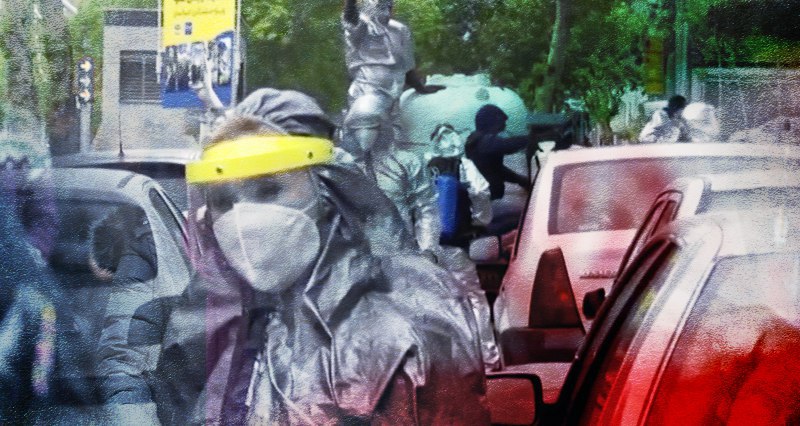
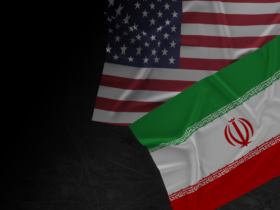
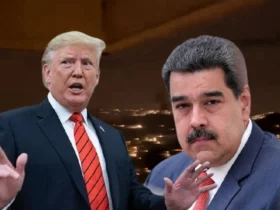
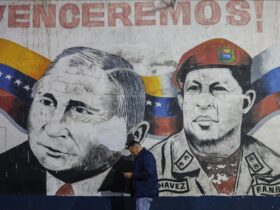
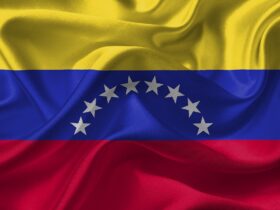


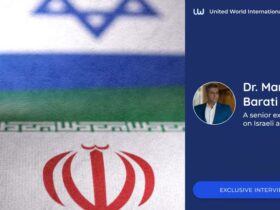


Leave a Reply